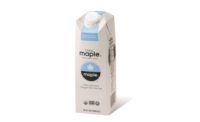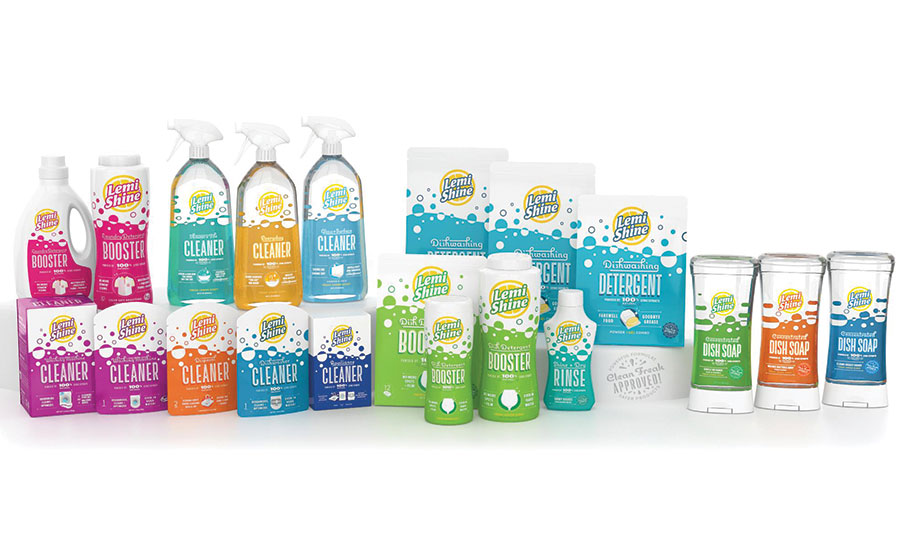Market Trends: Household Packaging
Household packaging brings the focus back to nature
The household packaging market sees a greater push toward greener, cleaner and more natural products.




It used to be if a household cleaner smelled “strong,” consumers knew it would clean their kitchen counters, bathrooms and more. Nowadays, these same consumers are seeking experiential scents, as well as looking for buzz words on labels like “clean, green, natural, sustainable.” According to Heather Correll, fragrance evaluator at Lebermuth Company (lebermuth.com), innovator in essential oil fragrance and flavors industries, two distinct trends have emerged: more sophistication in fragrance choices and odor complexity in scent pairings, and second, fragrance offerings that enhance the natural position and authenticity of the product.
This evolution of scent in household care is following changes in demographics. A variety of consumers from millennials to aging boomers, and factors such as gender roles and family structure, are playing a role in who is buying – and using – cleaning products.
For examples of the power of scent and the nod at cleaner and greener, just look at Product of the Year USA’s 2017 award winners. Being the largest consumer-voted award, the goal of the organization is to guide consumers to the best products in the market while rewarding manufacturers for quality and innovation.
Another household product line worthy of mention is Lemi Shine’s full range of nontoxic household cleaning products, including kitchen and bathroom cleaners, appliance cleaners and detergent boosters making a run for the most colorful on shelves. The family-owned nontoxic household cleaning brand made from 100% natural citric extracts, got a new look by partnering with creative agency Helms Workshop (helmsworkshop.com) to simplify and streamline the packaging; better organize and remove visual clutter; and differentiate Lemi Shine products from competitors on the shelves. In an effort to better speak to its core consumer, the 23-year-old brand simplified and streamlined the packaging and ended up with vibrant, sleek new packaging that resonates with its target demographic both on the shelf and in the home.
Lemi Shine also added two new products to the line: the Everyday Cleaner with GunkGuard™ – a natural polymer that creates an invisible protective layer for a long-lasting clean; and Laundry Booster with FunkGuard™ – formulated to enhance detergent scent, eliminate odors in the wash, and prevent odors in clothing.
To make a leap over the mundane in household products, choose scents that are tried and true yet vary enough to show evolution: citrus, herbal and fresh notes are most common. Or, try scents that offer a sophisticated or more complex fragrance for the olfactory senses. Larger brands are starting to play with mixing scents to grab consumers’ attention. Consumers expect household products to be functional, but want the fragrances to be experiential like the other fragranced products they use.
|
2017 Product of the Year winners in household packaging include:
We had the chance to speak with Shaun Gaus, president and CEO of Precise Packaging LLC (precisepackaging.com), about what to expect from the household category moving forward. Packaging Strategies: What does today’s busy consumer expect from household packaging? Gaus: Quality, durability and value are enduring consumer expectations in household products, as in many other markets. The best product in the world will lose brand equity if the package doesn’t perform as it should, such as when a spray nozzle clogs or a unit leaks. That’s why it’s important to always test and source packaging components and their functionality with a given formulation to maintain the quality performance that supports your customers’ brands. PS: How does the packaging of household goods factor into the purchasing decision? Gaus: Packaging is the first thing a consumer sees during the shopping experience, so its role as a merchandising tool will always be very important. Appearance and branding depend on it, but it doesn’t end there. Size matters – the bargain shopper might believe a large package is a better value whereas another consumer might be attracted to a small, unobtrusive package that travels well. PS: How are packagers answering consumers’ need for “clean,” “transparent” products in the sector? Gaus: “Green and clean” is increasingly important to consumers as more of them are looking at ingredients and packaging from two vantage points: They’re seeking organic, non-toxic, healthy formulations for household products and products with minimal environmental impact. The trend is moving toward greater transparency in product attributes. More often, consumers want to purchase from companies they perceive as being more responsible and kinder to their health, to animals and to the environment. From cruelty-free to non-GMO to organic, and recyclable to minimized footprint to greener propellants, it’s all on consumers’ minds today – and they want details made readily available. PS: Do you see any new trends in household packaging? Gaus: It’s not new, but there is a trend toward outsourcing the product development and packaging to turnkey providers for cost efficiencies. Greater demand for product transparency in other markets will drive similar expectations in household products, with a corresponding impact on packaging and labeling choices. As well, an emerging trend in the move toward sustainable packaging through source reduction and minimal consumption is the development of compressed air in aerosols, which has caught on in Europe. We expect this will hit the U.S. market at some point in the future. |
Looking for a reprint of this article?
From high-res PDFs to custom plaques, order your copy today!

 Some CPGs and retailers are focused on repackaging products to appear more sustainable by downsizing. An example of this is a concentrated room spray – a certain segment of consumers may buy and even pay more for this feature because the same quantity comes in a smaller package, appealing to their environmental concerns.
Some CPGs and retailers are focused on repackaging products to appear more sustainable by downsizing. An example of this is a concentrated room spray – a certain segment of consumers may buy and even pay more for this feature because the same quantity comes in a smaller package, appealing to their environmental concerns.










